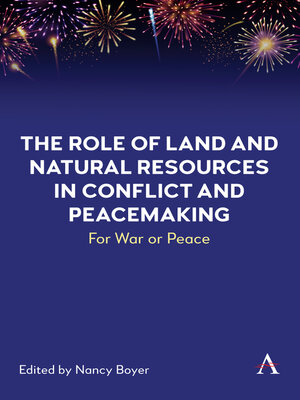The Role of Land and Natural Resources in Conflict and Peacemaking
ebook ∣ For War or Peace · Anthem Environment and Sustainability Initiative
By Nancy Boyer

Sign up to save your library
With an OverDrive account, you can save your favorite libraries for at-a-glance information about availability. Find out more about OverDrive accounts.
Find this title in Libby, the library reading app by OverDrive.



Search for a digital library with this title
Title found at these libraries:
| Library Name | Distance |
|---|---|
| Loading... |
Aiming to contribute to the literature of what works to make peace, this volume examines the roles of land, water and mineral resources in conflict and peacemaking. The analysis focuses on six cases of prolonged, ethno-national, asymmetric conflict and six cases of special interest. Land, water and natural resources were causes of conflict, sources of funding to combatants, weapons of war, reasons to make peace and incentives to make peace. Nine of the cases ended in a negotiated, written peace accord which lasted more than 5 years. While some of the conflict areas saw a resurgence of armed conflict, other cases are exemplars of lasting peace agreements. The analysis shows what was successfully addressed in peace accords, as related to land and natural resources; what was addressed in aspirational terms that were never fully implemented; and what decisions were left to political processes that were agreed to, ending extensive armed conflict.







